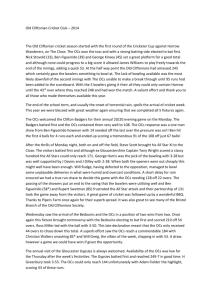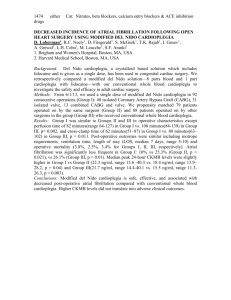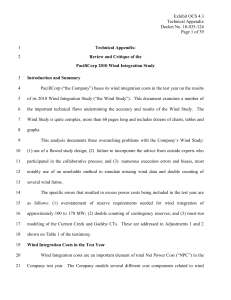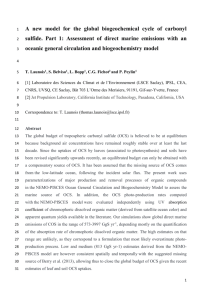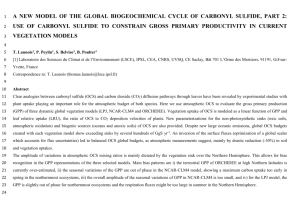document
advertisement
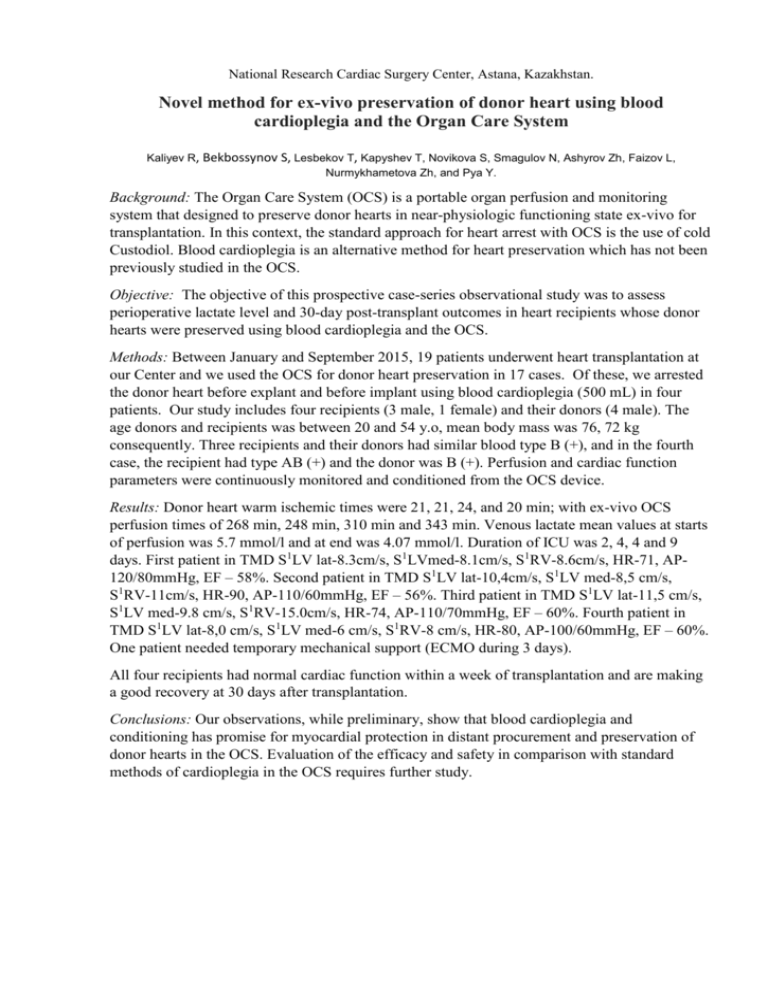
National Research Cardiac Surgery Center, Astana, Kazakhstan. Novel method for ex-vivo preservation of donor heart using blood cardioplegia and the Organ Care System Kaliyev R, Bekbossynov S, Lesbekov T, Kapyshev T, Novikova S, Smagulov N, Ashyrov Zh, Faizov L, Nurmykhametova Zh, and Pya Y. Background: The Organ Care System (OCS) is a portable organ perfusion and monitoring system that designed to preserve donor hearts in near-physiologic functioning state ex-vivo for transplantation. In this context, the standard approach for heart arrest with OCS is the use of cold Custodiol. Blood cardioplegia is an alternative method for heart preservation which has not been previously studied in the OCS. Objective: The objective of this prospective case-series observational study was to assess perioperative lactate level and 30-day post-transplant outcomes in heart recipients whose donor hearts were preserved using blood cardioplegia and the OCS. Methods: Between January and September 2015, 19 patients underwent heart transplantation at our Center and we used the OCS for donor heart preservation in 17 cases. Of these, we arrested the donor heart before explant and before implant using blood cardioplegia (500 mL) in four patients. Our study includes four recipients (3 male, 1 female) and their donors (4 male). The age donors and recipients was between 20 and 54 y.o, mean body mass was 76, 72 kg consequently. Three recipients and their donors had similar blood type B (+), and in the fourth case, the recipient had type AB (+) and the donor was B (+). Perfusion and cardiac function parameters were continuously monitored and conditioned from the OCS device. Results: Donor heart warm ischemic times were 21, 21, 24, and 20 min; with ex-vivo OCS perfusion times of 268 min, 248 min, 310 min and 343 min. Venous lactate mean values at starts of perfusion was 5.7 mmol/l and at end was 4.07 mmol/l. Duration of ICU was 2, 4, 4 and 9 days. First patient in TMD S1LV lat-8.3cm/s, S1LVmed-8.1cm/s, S1RV-8.6cm/s, HR-71, AP120/80mmHg, EF – 58%. Second patient in TMD S1LV lat-10,4cm/s, S1LV med-8,5 cm/s, S1RV-11cm/s, HR-90, AP-110/60mmHg, EF – 56%. Third patient in TMD S1LV lat-11,5 cm/s, S1LV med-9.8 cm/s, S1RV-15.0cm/s, HR-74, AP-110/70mmHg, EF – 60%. Fourth patient in TMD S1LV lat-8,0 cm/s, S1LV med-6 cm/s, S1RV-8 cm/s, HR-80, AP-100/60mmHg, EF – 60%. One patient needed temporary mechanical support (ECMO during 3 days). All four recipients had normal cardiac function within a week of transplantation and are making a good recovery at 30 days after transplantation. Conclusions: Our observations, while preliminary, show that blood cardioplegia and conditioning has promise for myocardial protection in distant procurement and preservation of donor hearts in the OCS. Evaluation of the efficacy and safety in comparison with standard methods of cardioplegia in the OCS requires further study.


